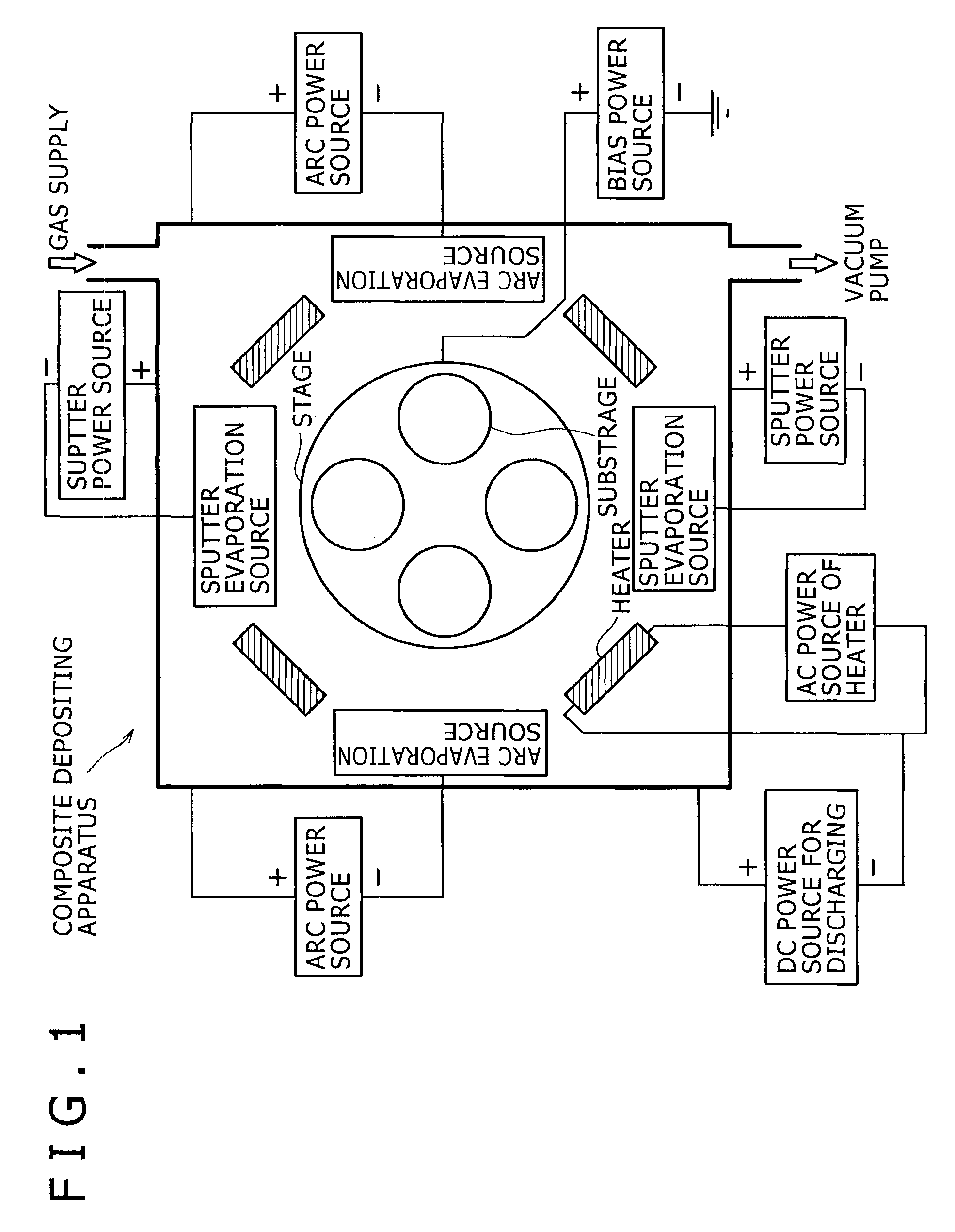Wear-resistant member with hard coating
a technology of wear-resistant members and hard coatings, which is applied in the direction of superimposed coating processes, other chemical processes, natural mineral layered products, etc., can solve the problems of insufficient wear-resistant -alumina formed at a low temperature from a cr-containing source, heat deformation of the substrate, and inability to apply sharp-edged tools and rotating tools, etc., to achieve good adhesion
- Summary
- Abstract
- Description
- Claims
- Application Information
AI Technical Summary
Benefits of technology
Problems solved by technology
Method used
Image
Examples
examples
[0041]The invention will be described in more detail with reference to the following Examples and Comparative Examples, which are not intended to restrict the scope thereof.
(Substrate)
[0042]Specimens in the examples are prepared by forming an underlying layer and a hard coating sequentially on the surface of a substrate selected for the purpose of evaluation. A substrate for evaluation of hardness and adhesion is mirror-finished cemented carbide. A substrate for evaluation of thermal stability is platinum. A substrate for evaluation of cutting is an insert of cemented carbide (SNGA10408).
PUM
| Property | Measurement | Unit |
|---|---|---|
| temperature | aaaaa | aaaaa |
| temperature | aaaaa | aaaaa |
| temperature | aaaaa | aaaaa |
Abstract
Description
Claims
Application Information
 Login to View More
Login to View More - R&D
- Intellectual Property
- Life Sciences
- Materials
- Tech Scout
- Unparalleled Data Quality
- Higher Quality Content
- 60% Fewer Hallucinations
Browse by: Latest US Patents, China's latest patents, Technical Efficacy Thesaurus, Application Domain, Technology Topic, Popular Technical Reports.
© 2025 PatSnap. All rights reserved.Legal|Privacy policy|Modern Slavery Act Transparency Statement|Sitemap|About US| Contact US: help@patsnap.com

